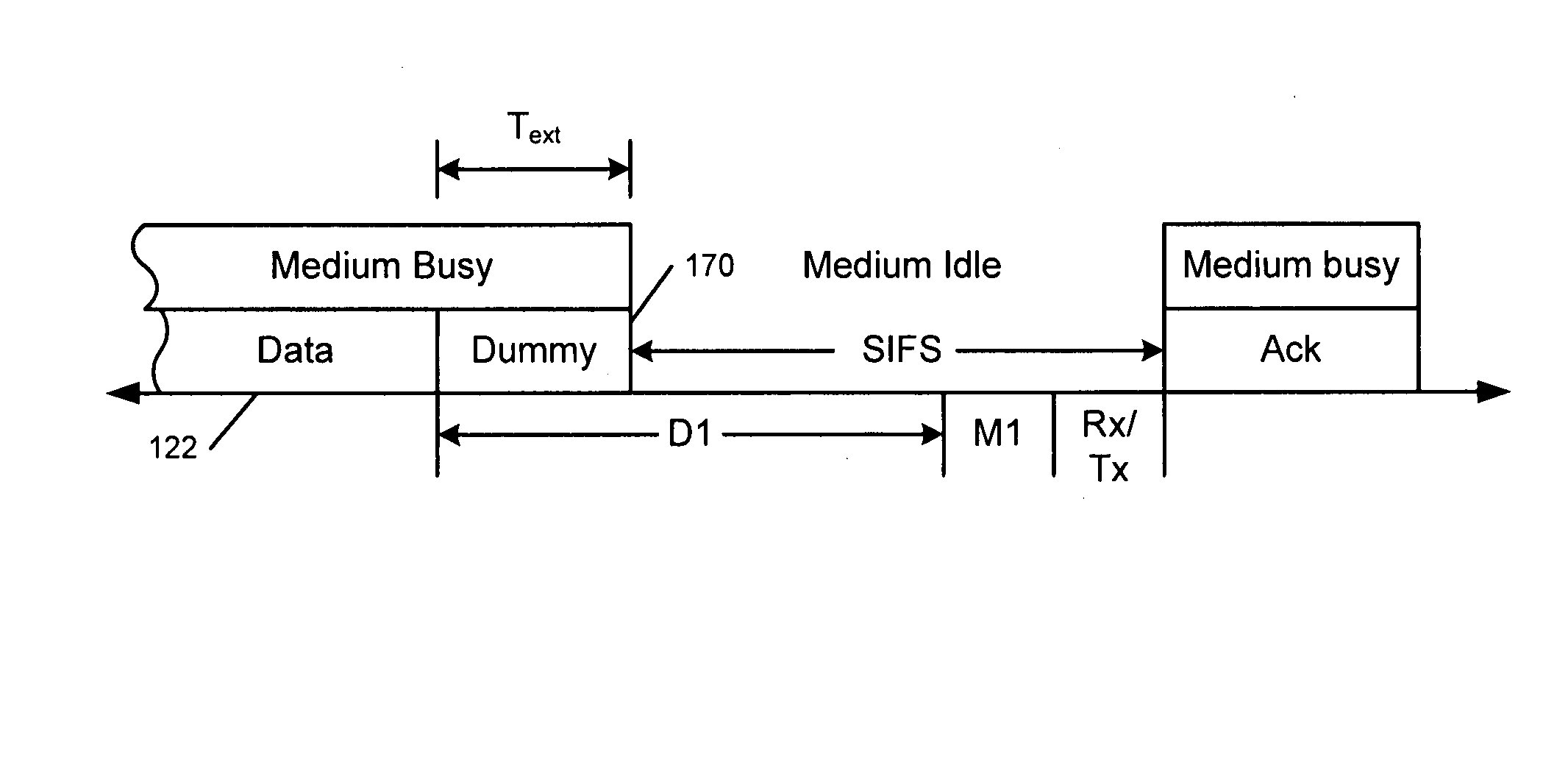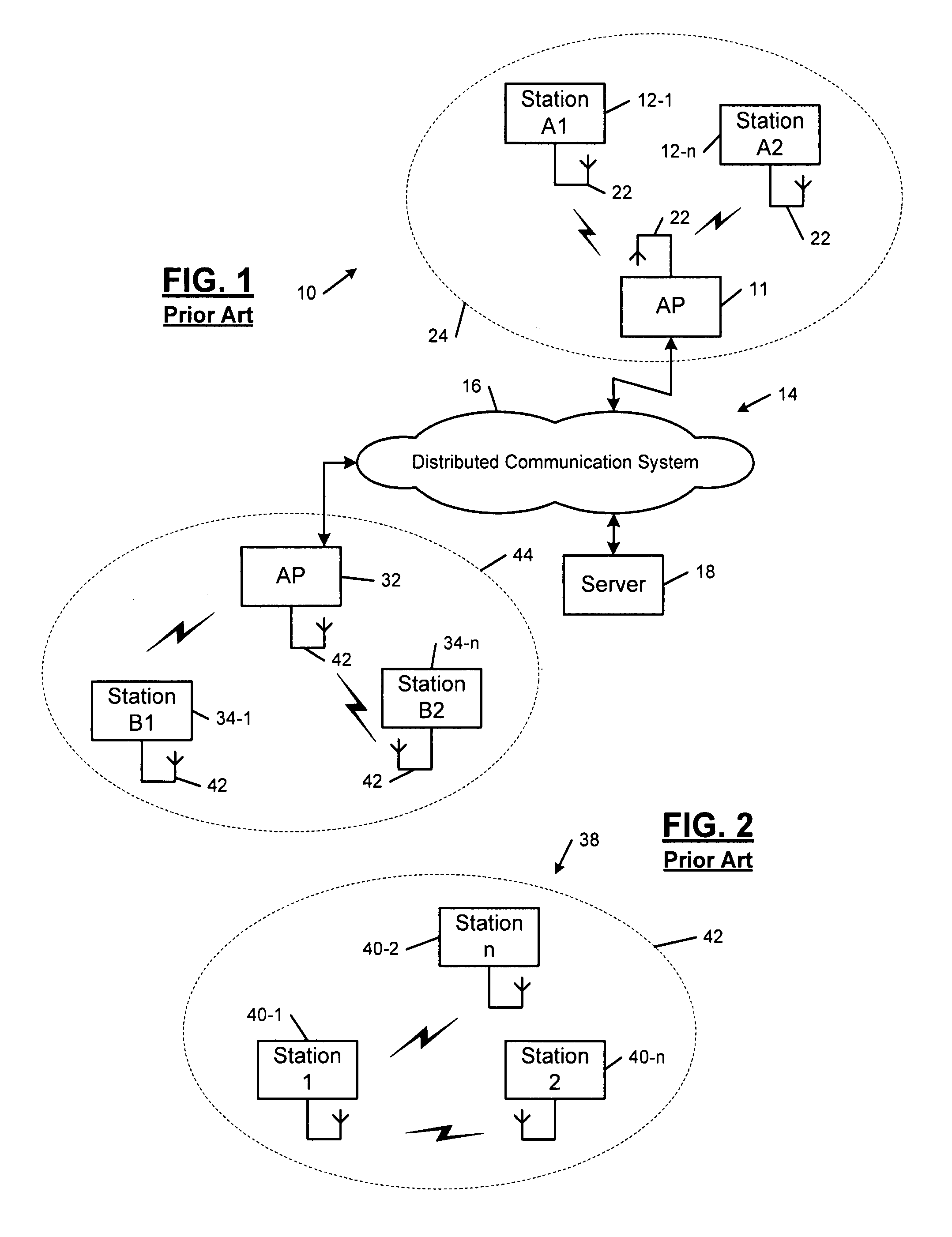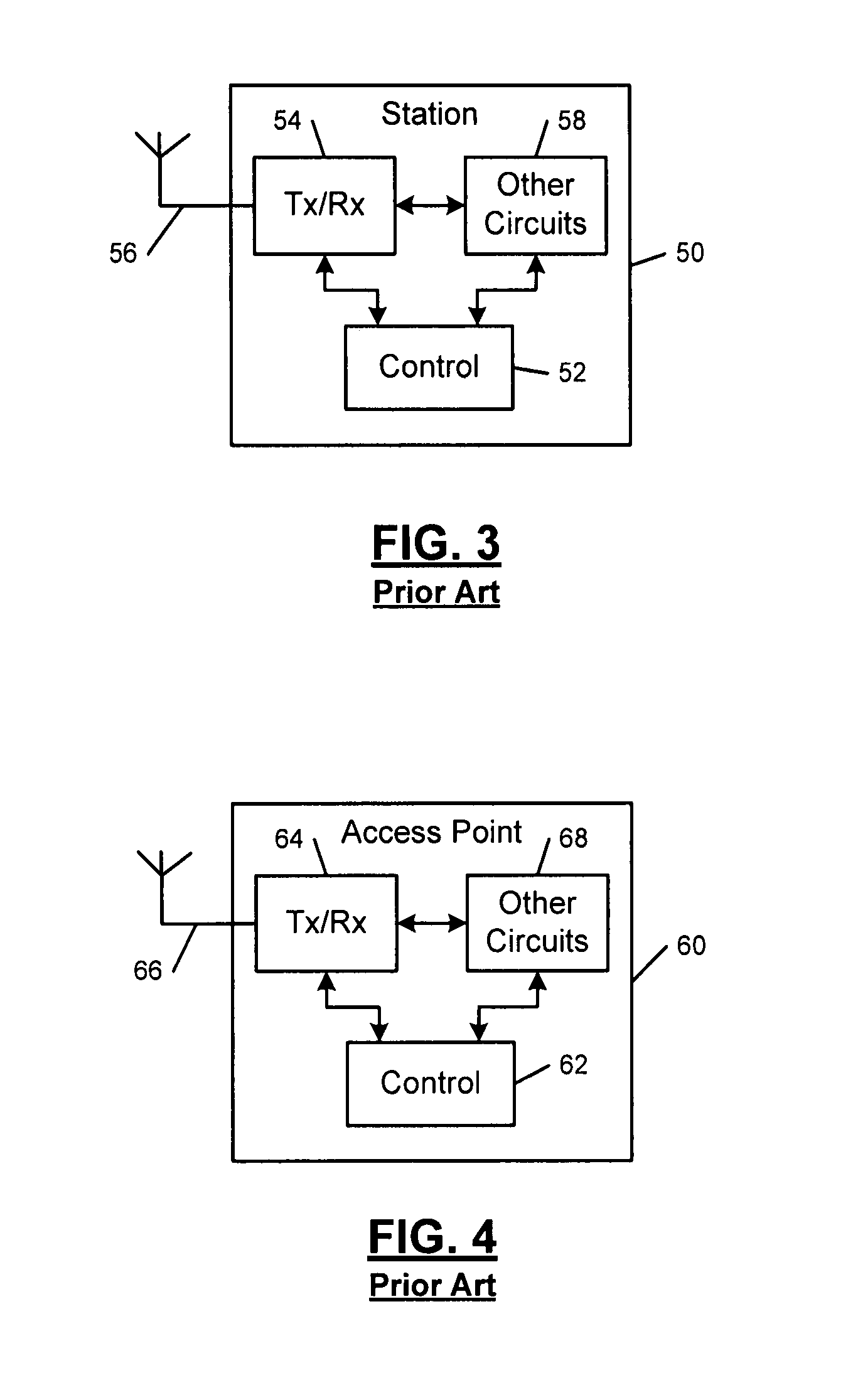Extension mode for wireless LANs compying with short interframe space requirement
a wireless lan and interframe space technology, applied in the field of wireless local area networks, can solve the problems of preventing the use of advanced signal processing techniques, turbo coding, reed-solomon coding, etc., and other advanced error coding techniques are not possibl
- Summary
- Abstract
- Description
- Claims
- Application Information
AI Technical Summary
Benefits of technology
Problems solved by technology
Method used
Image
Examples
Embodiment Construction
[0033]The following description of the preferred embodiment(s) is merely exemplary in nature and is in no way intended to limit the invention, its application, or uses.
[0034]Referring now to FIG. 8, a PLCP header 120 precedes data 122. The PLCP header 120 includes a signal portion 126, a service portion 128, a length portion 130, and a CRC portion 132. The signal portion 126 is typically 8 bits, the service portion 128 is typically 8 bits, the length portion is typically 16 bits, the CRC portion 132 is typically 16 bits, and the data 122 typically has a length between 64-2300 bytes.
[0035]Allowed values for the signal portion 126 are currently defined by the IEEE section 802.11 and other related sections as follows: “0A” (in hexadecimal) is for 1 Mbps; “14” is for 2 Mbps, “37” is for 5.25 Mbps, and “6E” is for 11 Mbps. According to the present invention, an additional code “XX” is used to indicate an extension mode. The additional code “XX” is a predetermined code that can be set equ...
PUM
 Login to View More
Login to View More Abstract
Description
Claims
Application Information
 Login to View More
Login to View More - R&D
- Intellectual Property
- Life Sciences
- Materials
- Tech Scout
- Unparalleled Data Quality
- Higher Quality Content
- 60% Fewer Hallucinations
Browse by: Latest US Patents, China's latest patents, Technical Efficacy Thesaurus, Application Domain, Technology Topic, Popular Technical Reports.
© 2025 PatSnap. All rights reserved.Legal|Privacy policy|Modern Slavery Act Transparency Statement|Sitemap|About US| Contact US: help@patsnap.com



